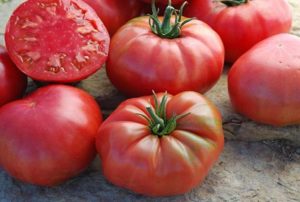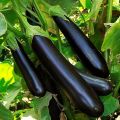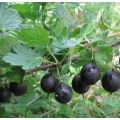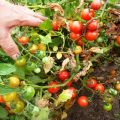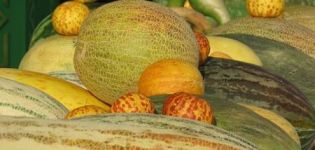Characteristics and description of the Black Prince tomato variety, its yield
The Black Prince tomato stands out from hundreds of other species with its characteristic color: deep burgundy, dark. Otherwise, it is a typical tomato. Further you will find a description of the variety, get acquainted with the features of planting and care, learn about the yield and much more.
Characteristic
The Black Prince Tomatoes were created by Chinese scientists. During the development, genetic engineering products were added, however, the species does not belong to the type of GMO, so even connoisseurs of proper nutrition can use it.
The characteristic of the variety is as follows:
- The bushes are indeterminate, that is, they have no growth restrictions and can reach the roof of the greenhouse;
- On the sturdy trunk you can see the typical tomato leaves;
- Inflorescences appear approximately every 8 leaves;
- The brushes have an average of 4 berries;
- The fruit is round, regular in shape, sometimes slightly pointed towards the end. Has a fleshy consistency, sweetish and exudes a pleasant aroma. The maximum weight of one tomato is 400 gr.
It is advisable to sell the black prince fresh, since it is not suitable for long-term storage, being whimsical in transportation. When exposed to high temperatures (during boiling, stewing), it acquires a typical red color.

Not very suitable for canning, as it has a thin skin that bursts in jars.
The Black Prince tomato variety is quite disease resistant. It can be susceptible to phytophthora, but only the leaves are affected, the fruits remain intact. This is the description of the variety.
Harvest amount
Tomatoes Black Prince ripens quite an impressive amount of fruits. The yield from one bush can be from 3 to 5 kg. It depends on the climatic conditions in which the plant lives: the warmer, the higher the fertility.
Choosing seeds, preparing them for planting
When choosing a material for sowing, it is advisable to give preference to seeds of domestic production, since they are better adapted for Russian weather conditions. Although foreign grains often have a more attractive appearance, difficulties may arise in their implementation.
Take special care when looking at the expiration date of the seeds for sowing. Old material will most likely germinate too (perhaps only partially), but it will bear fruit worse.
Manufacturers offer 2 types of seed:
- Seeds that have passed the disinfection procedure and are coated with all the necessary nutrients;
- Ordinary seeds, which you need to prepare for sowing yourself.
Preparing material for planting is quite simple:
- We cut several strips from a medical bandage, about 20 cm long. Gauze is also suitable, the width in this case should be 10-15 cm;
- Place 1 sheet of fabric on the bottom of a flat plate with rounded edges, then lay out some of the seeds. We alternate the bandage and seed, as if making a sandwich. Try to distribute the seeds evenly, in one line, so that they do not fall on top of each other;
- We breed potassium permanganate until a dull pink, light color is formed. Pour the liquid into the dish so that all the kernels are drowned. After 20 minutes, remove the potassium permanganate and rinse the seeds with clean cool water directly in bandages;
- Next, fill the sandwich with a pre-purchased growth stimulant (optional), maintain the composition according to the instructions.
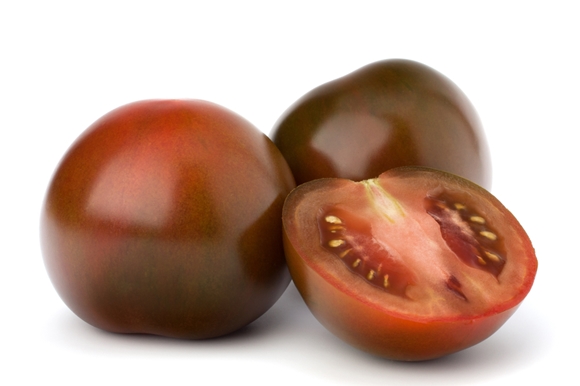
It is also recommended to harden the kernels in a refrigerator at a temperature not exceeding +5 degrees.
Preparing the soil
Tomatoes of this variety prefer light soil with low acidity. If in the previous season tomatoes, peppers or eggplants were already sitting in the beds, then fertilize the soil well with limestone.
Be sure to mix the soil with fertilizers: wood ash, humus, superphosphate. Before joining, it is advisable to disinfect the composition by calcining it in an oven or freezing it.
Description of the disembarkation process
Those who have previously planted tomatoes should not have any problems growing Black Prince tomatoes.
It is necessary to plan the planting of seedlings in advance. It reaches readiness in about 50 -70 days, its growth should be a maximum of 35 cm. If you overexpose a bush in a container and let it grow large, it may not take root.
Plants are planted depending on weather conditions. As a rule, this is mid-June.
This variety is equally comfortable both in greenhouse conditions and in open beds. If you decide to place the sprouts outdoors, do not forget that the abundant sunlight can dry out the leaves. To avoid this problem, you should carefully monitor the intensity of watering.
The seedling must be buried a few centimeters in the ground, approximately to the lower leaves. In this case, the trunk should be slightly inclined towards the south.
After the plant has been successfully transferred to the ground, it must be watered thoroughly. It is advisable to use water with the addition of a special groundbait, which contains ash. Pour a small amount of sawdust or dry leaves (mulch) at the roots.
The roots are on average up to 50 cm long, therefore, a certain distance of 70 cm should be maintained between the seedlings.
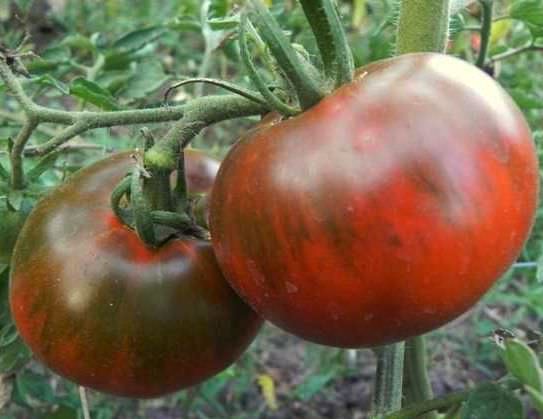
If you plan to grow tomatoes of several varieties in the same greenhouse or in neighboring beds, then it is worth considering the fact that the Black Prince is actively pollinated with other plants. It is necessary to plant it at a short distance from the rest of the bushes in order to preserve the taste and aroma of the fruit.
The subtleties of caring for the bushes of the Black Prince
The plant bears rather large, and, therefore, heavy berries. This leads to the fact that the trunk and branches bend to the bottom or even break. The tomatoes themselves are also not good for the proximity to the soil: there is a great chance of picking up pests. To avoid problems, the plant must be tied up.
The black prince loves moisture, so it must be often watered at the very root, or using a drip irrigation system.
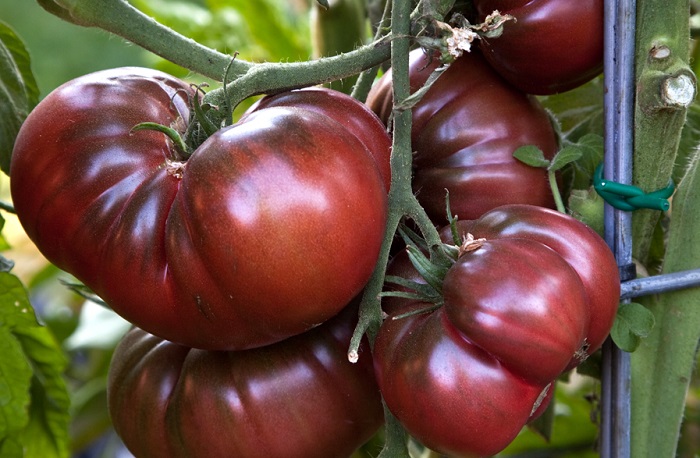
Reviews suggest that the fruits of the Black Prince are much fleshy if the soil is loosened more often. It is required to fertilize the bushes every 10-15 days with a special compound, which can be purchased in stores for summer residents.
When growing tomatoes, do not forget to protect the bush from various fungal infections, feed with additives for the intensity of development.At the same time, you should not spray the leaves too often, because they are able to independently produce a natural protective poison.
The first fruits, with proper plant care, appear a couple of months after planting. Thanks to their rich dark color, they will become a real highlight of the garden, arouse envy and delight among guests.
